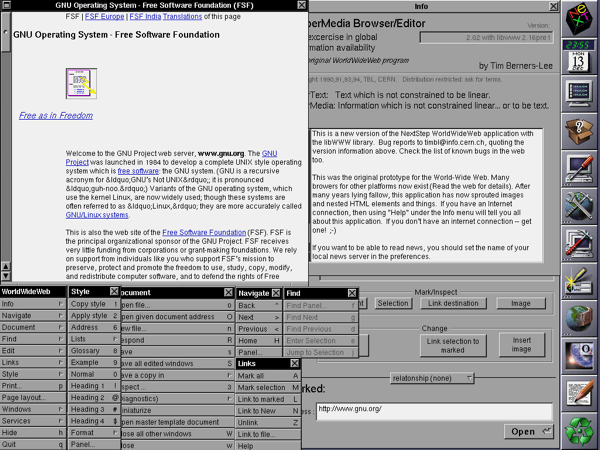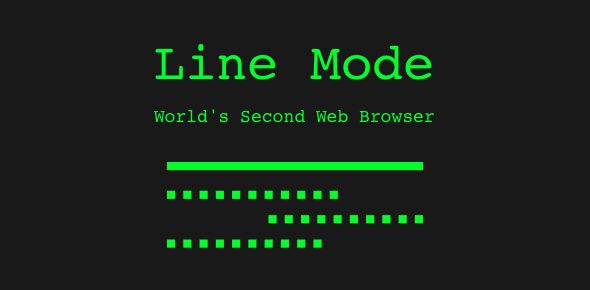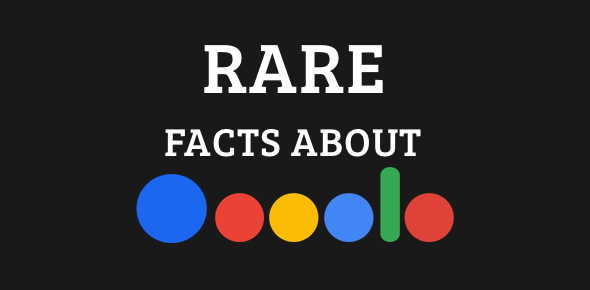The World Wide Web (WWW) was invented by Sir Tim Berners-Lee, a computer scientist working at CERN. He is credited for creating the world’s first browser and the world’s first server – the two web software essential for the World Wide Web.
I’m sure you know that the Internet and WWW are different! In fact, the Internet had been in existence for years before the WWW came into picture. Though the net allowed for distribution of documents and files, viewing and sharing them these was still kind of cumbersome. Small issues like these were ironed out by the the advent of the WWW.
Sponsored Links
As I mentioned before, the web is driven primarily by a server and a browser. The former is not something a typical web user cares about. It’s the browser that brings everything to life and makes it super-easy.
Before the browser came into existence, users first had to download a document and then open it in another program to view it. The browser displayed the document (hypermedia) itself, and additionally, one could simply click on a hyperlink to view another document. The idea was simple, right? And that’s why the WWW is such a big deal.
So without further ado, here are 10 facts about the world’s first web browser –
the one that started it all.
The name: WorldWideWeb
The original name of the world’s first web browser was WorldWideWeb. Later, to distinguish between the network and the software, Tim Berners-Lee renamed it to Nexus.
“The Information… what?”
Berners-Lee had come up with a bunch of names for his software – “Mine of Information“, Information Mine and “Information Mesh“. He finally decided on WorldWideWeb.
HTML editor
WorldWideWeb was also the world’s first HTML editor. You could edit a web page and view the changes on-the-fly.
Ran on only one operating system – NeXTSTEP
The one drawback with Nexus was that it ran only on NeXTSTEP, the operating system of NeXT Computers on which it was developed. Unfortunately, it was never ported to other systems.
You see, Tim Berners-Lee had used the two state-of-the-art NeXTcube computers in his lab to create not only the browser but also the first web server. Once the web was ready, he invited others to join in and contribute. People started to create browsers for different operating systems, so there was no actually need to have versions of Nexus for other platforms.
Additionally, he supervised the development of Line Mode, the second web browser, which was available for all popular operating systems of that time.
FYI, the world’s first web site was put online on one of the NeXTcubes. NeXT Computers was set up Steve Jobs when he quit Apple in 1985. It wouldn’t be very wrong to say that the World Wide Web was invented on Steve Jobs’ computers. The original computers are now of historical significance and are on display at CERN.
Born at CERN and was a part of a research project
The web and the browser were the result of a project Sir Tim Berners-Lee had undertaken at CERN (French: Conseil Européen pour la Recherche Nucléaire). The World Wide Web was born at the high-energy physics facility.
Only 2 months and it was good to go
It took Berners-Lee only two months of development to come up with the browser. And considering that short period of time, Nexus was quite an advanced piece of software. In addition to browsing web pages, one could edit them in the program itself. The software could displayed images (though, originally, they would open in a new window) and had a basic style sheets capabilities.
It’s still there… somewhere
Some of Berners-Lee original code still resides on the NeXT computers preserved at the museum at CERN. The machines are now considered historical artefacts. The hard drives of these computers contain the code of both the browser and the world’s first web server, CERN httpd.
A Christmas gift?
As per sources, the first successful build of the browser was on Christmas Day in 1990. However, Sir Tim has maintained that he wasn’t working during the holidays. I like the thought of it being a Christmas gift to the world. Anyway, whether it was developed on Christmas eve or not, the software was ready by the end of the year and distributed a few months later.
First public release
The World Wide Web project was officially announced by Sir Tim Berners-Lee on the 6th of August 1991 on the alt.hypertext newsgroup. By this time, the second web browser, Line Mode, had been released.
The only way to view web pages
In the early days of its development, WorldWideWeb (or Nexus, if you prefer) was the only way one could view web pages. The software was quite advanced actually. It could display basic style sheets, download and open various files like PostScript, video and audio. Images used to open in a new window initially. This was later corrected so that images display inline.

Hope you enjoyed knowing about the world’s first web browser. If I missed out something, please do let me know via the comments section below. Your inputs are highly appreciated as always.
End Note #1: Though Sir Tim Berners-Lee is regarded as the “Inventor of the World Wide Web”, a title he was conferred at the opening ceremony of the 2012 Summer Olympics in London, he was helped by other people most notably Robert Cailliau and Nicola Pellow.
End Note #2: The address of the world’s first web site was http://nxoc01.cern.ch/hypertext/WWW/TheProject.html (later changed to http://info.cern.ch/hypertext/WWW/TheProject.html. The first copy of the site wasn’t preserved since it quickly underwent several modifications. The oldest known web page will still exists online is at //www.w3.org/History/19921103-hypertext/hypertext/WWW/Link.html. It’s last modification date is Tuesday, 13th November 1990 15:17:00 GMT.
End Note #3: As of 2017, there are tens of web browsers in the market and we’ve already seen two Browser Wars! Browsers, like Netscape Navigator or Internet Explorer, which were once extremely popular have now been virtually wiped out (or will be in the near future). At the time of writing, Google’s Chrome is regarded as the world’s best browser.






